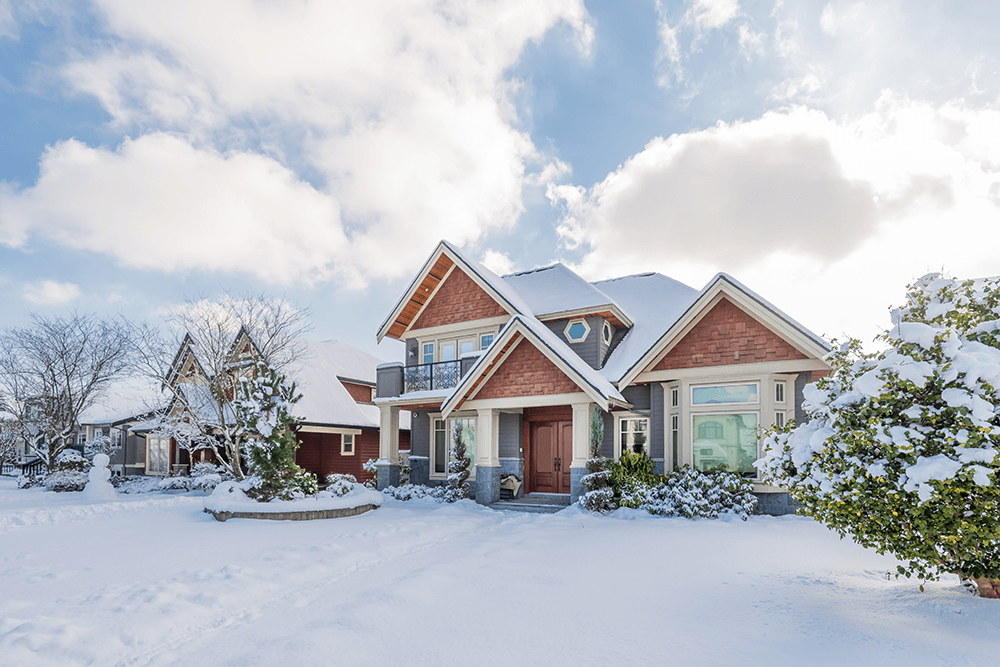
 Lifestyle
Lifestyle6 Tips for Winterizing your Home
When cold weather comes back, there are a few essential tasks that need to be done to prepare your home for tough outdoor conditions. What can be done to prepare your home for the winter? Keep your property in the best condition by preparing it for the winter in the last weeks of fall. By starting the winterization process before the first freeze, you can avoid costly repairs like broken pipes and sagging gutters. Here are 6 tips for winterizing your home.
- Prevent Drafts
- Check the Chimney
- Clean and Inspect the Gutters
- Inspect the Attic and Roof
- Protect Your Plumbing
- Remove Outdoor Hoses and Drain Outdoor Faucets
Best Ways to Protect Your Home in the Winter
1. Prevent Drafts
In the late fall, you can start to feel where the cold drafts are entering the home. Two main places where air leaks happen are the door and windows. While the weather still isn’t freezing, pick a sunny day and caulk around the openings and holes around your windows and doors. Install new weather stripping under the door and its sides too.
You may also need to seal areas around mail chutes and window air conditioners. When you’re in a pinch, a draft blocker can be placed inside the home as well to keep the cold night air from seeping in from under the door. However, it’s best to fix this problem with proper weather stripping when you have time for the task.
- Pro Tip: Check your home’s masonry for any holes, chips, or leaks. Though bricks are sturdy, the sealant between them can wear out over time. This sneaky source of heat loss is easy and affordable to fix.
2. Check the Chimney
There’s nothing like a cozy winter fire, but safety comes first!If you plan to use the chimney this winter, first get it inspected and cleaned by a chimney professional. Unexpected hazards like wasps nests and creosote buildup can cause a dangerous fire in your chimney if you light a fire without an inspection. It doesn’t cost much to get some eyes on your chimney, but it can save your house.
- **Pro Tip:**Any other source of heat such as a furnace or propane heating system should also be inspected and serviced before it officially runs this winter.
3. Clean and Inspect the Gutters
You can prevent many problems like sagging gutters and broken gutter pipes by cleaning them in the fall. By removing the debris and ensuring a proper flow of water, you can stop water from getting trapped in the gutters and freezing. When water freezes, it expands and can cause your gutter system to burst, distort, or sag. If you want to save time on regular maintenance, install gutter guards to keep leaves and other debris away. This reduces the required frequency of cleaning gutters and therefore maximizes your gutter system’s life.
4. Inspect the Attic and Roof
In the winter, problematic ice dams can form on roofs that don’t have proper attic ventilation. This formation of ice can damage your roof and cause you to repair it before its required maintenance time. Prevent this costly problem by inspecting your roof in the fall. A roofing inspector can make sure that the attic is properly insulated and that the ventilation system is working well. They will check for signs of poor ventilation like moisture, shiners, frost, and blocked soffit vents.
Many of these flaws aren’t noticeable to the standard homeowner, so it’s important to get a professional opinion. When your attic is well-ventilated, it will be around 10 degrees warmer than the outside temperature.Ruling out any damage to the roof before winter is important too because freezing temperatures can cause weaker and older roofs to fail. This is why it’s vital to inspect your roof after a major blizzard as well. By staying on top of your roof and attic, you can prevent many big repairs and nip small problems in the bud.
5. Protect Your Plumbing
Frozen, bursting pipes are a big problem in areas where the winter often includes below-freezing temperatures. Protect your home against this problem by insulating the pipes that are likely to freeze. Since water expands when it freezes, leaving any water inside these vulnerable pipes can cause them to burst. For interior pipes, leave a slow drip of running water to keep a flow going that prevents freezing and bursting.
- Pro Tip: To protect your pipes against increased pressure from freezing, install an emergency pressure relief valve in your plumbing system. This valve stops high pressure from rupturing your pipes during the coldest months. It’s highly recommended for places with especially cold winters.
6. Remove Outdoor Hoses and Drain Outdoor Faucets
Winter isn’t a time to use water outside, so you should also winterize your outdoor valves. First, shut off the water that goes to your outdoor spigots and then drain them completely so that no water remains inside them. Then, detach your garden hoses, drain them, and store them in a shed or garage. Finally, insulate the outdoor spigots so that they don’t freeze over.
Climate-Controlled Storage Units For Seasonal Items
If you need to store any outdoor belongings for the winter, you’ll get the best results when temperatures are stable. Store all your high-needs seasonal items in a temperature-controlled unit. To find a climate-controlled storage unit for your belongings, contact us.
We're Your Storage Solution!
Storage Rentals of America is your convenient self-storage solution. So come into our office or give our storage experts a call at 1-800-457-5678. Our call center is available 7 days a week and can help determine which storage unit size best fits your storage needs.



